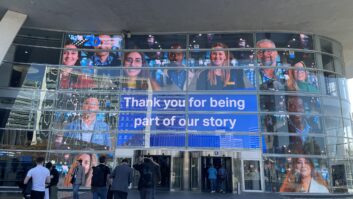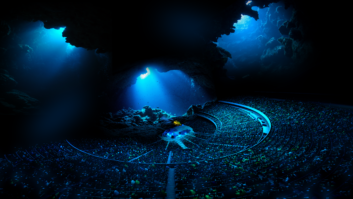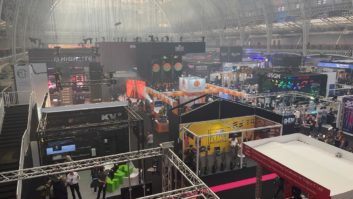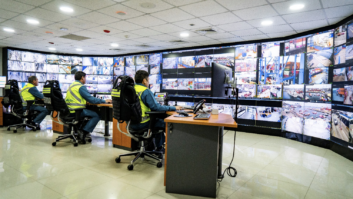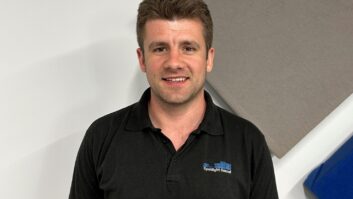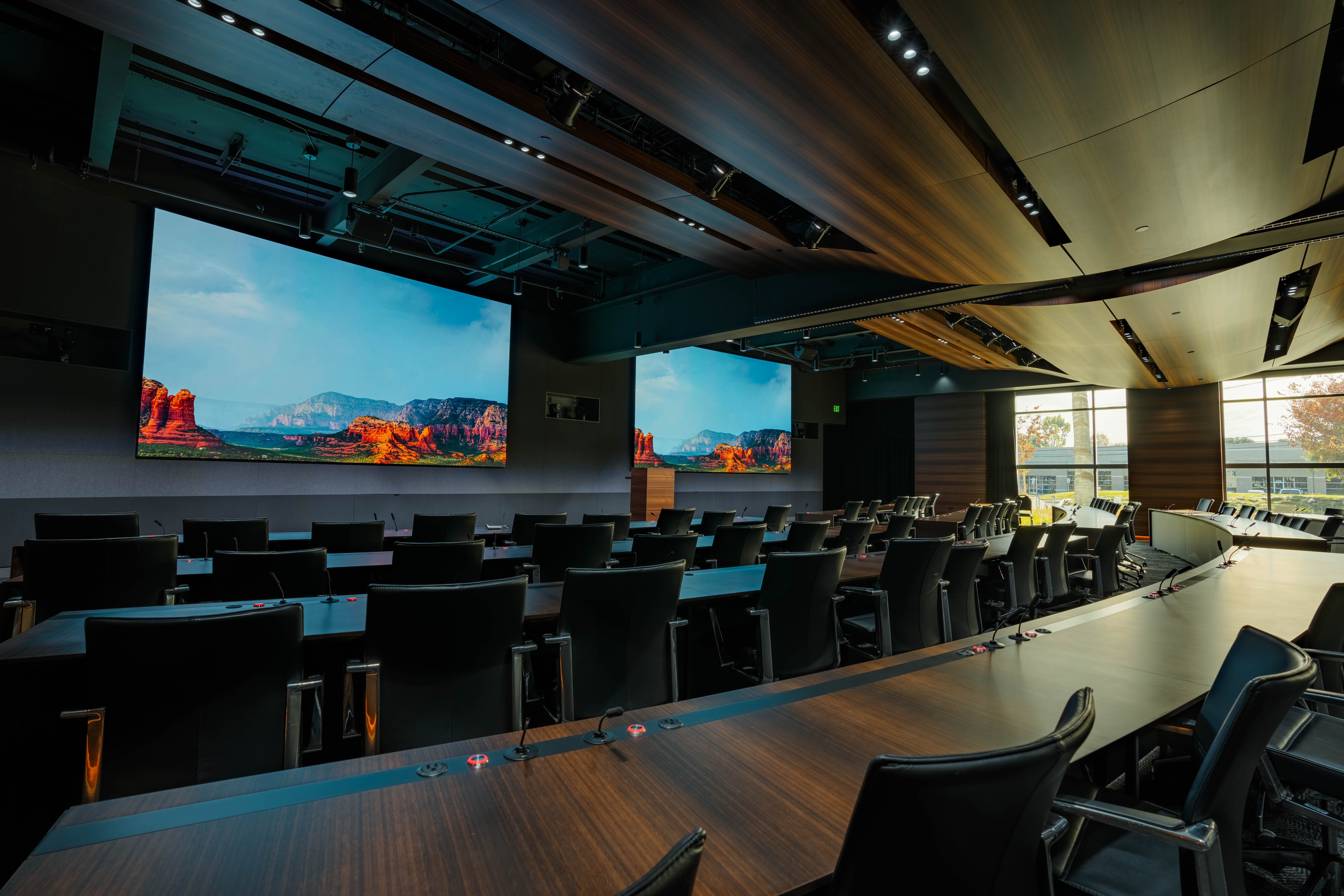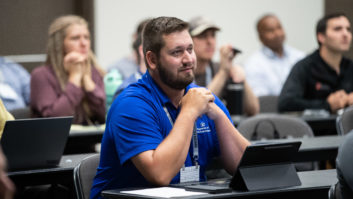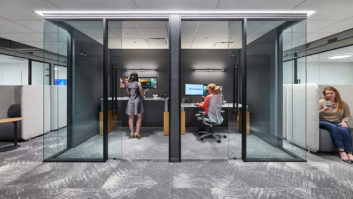Before 2020 came along, it would have been strange to think that internationally recognised and long-running music festivals such as Glastonbury, Roskilde, Tomorrowland, Creamfields and Montreux or high – profile tours by the likes of Genesis, The Weeknd, Billie Eilish, The Killers, Elton John and Taylor Swift could be taken for granted.
When all of these – plus countless corporate productions and sporting tournaments – were cancelled due to the Covid-19 pandemic, there was the realisation of just how much live shows are a key leisure activity for so many people. It also became apparent (if it had not been already), to all but those in government, that performance staging is a major industry, employing thousands of people and generating billions of pounds/dollars in business.
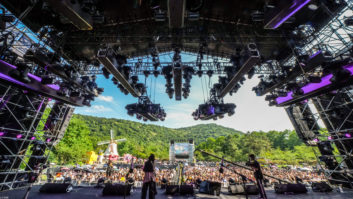 We Make Events, a collective formed by rental companies, musicians, technicians and trade bodies such as PLASA to campaign on behalf of personnel and highlight the importance of this sector, is still concerned that a significant proportion of freelancers have had to leave the industry and will not return. Among the founders was Andy Dockerty, managing director of leading UK rental company Adlib. He comments that Covid has decimated a sector that was only getting bigger and more profitable.
We Make Events, a collective formed by rental companies, musicians, technicians and trade bodies such as PLASA to campaign on behalf of personnel and highlight the importance of this sector, is still concerned that a significant proportion of freelancers have had to leave the industry and will not return. Among the founders was Andy Dockerty, managing director of leading UK rental company Adlib. He comments that Covid has decimated a sector that was only getting bigger and more profitable.
“We had been seeing a 14 percent a year growth in recent years,” he says. “For the year 2018-19 the events and touring market was the largest growing sector in the UK business community. The amount of investment was about £4 million a year in stock alone. Everything had been growing very nicely and then it largely disappeared overnight.”
SHOW BACKERS
There are signs that concerts and tours are returning, with shows that had been due to take place in 2020 rescheduled for either the end of this year or into next. There were try-outs last year with socially distanced gigs, where limited numbers of people were allowed in a venue. While these provided some employment for crew and entertainment for fans keen to see live music again, they were not regarded as serious alternatives to what had gone before, or, crucially, financially viable.
At the time of the conversation with Dockerty there was still no clear indication whether venue capacity would be 50 or 100 percent, certainly as far as the UK was concerned. Dockerty observed that the cancellation of many festivals had effectively put paid to the usually lucrative summer season but the traditional touring period towards the end of the year into 2022 could see improvement, perhaps considerably if there were no more lockdowns, but it was still uncertain.
Key to making shows happen is the experienced and enthusiastic workforce supporting the performers. Sound engineers, lighting technicians and other technical personnel through to warehouse and transportation staff have been hit hard, with very few, if any, being eligible for government support.
This has meant, Dockerty says, they have gone elsewhere: “Some have transferred their organisational skills to something like the building sector and found they are earning more money and working shorter hours. Others have been working more mundane jobs, such as deliveries for Amazon, but are reluctant to leave until they see what is going to happen in production. We have also lost some of our senior technicians to IT and software companies. Again, they’re now making more money than they would in touring and never have to leave the house again.”
All of which sounds very gloomy. But, live events is now a huge sector, one that has been hugely profitable for promoters, production and hire companies and equipment manufacturers alike. It has also developed and changed over the years; because of where it has got to due to that flexibility, we can assume that companies will want to protect their investments, adapting to the new landscape of the sector.
The uncertainty of how many people will be in audiences does not appear to be an issue for some, at least on a technical level. Remi Vaucher, product manager for performance loudspeakers and senior technical director of the live sound core team at QSC, comments that modern audio technology is geared more to the size of a venue than how many people are in it. “The deployment of our sound systems is mainly dependent on the total audience area, regardless of the actual occupancy, be it 50, 75 or 100 percent capacity,” he says.
“As large indoor venues and stadiums are not extensible, I do not think PA system requirements will be much different post-Covid. There have been experiments during the pandemic with ‘drive-in’ concerts and low audience density outdoor events in large venues; but those will not last much longer because the market is recovering and these systems are a little impractical and more expensive to deploy.”
Vaucher comments that tours, big sports events and shows are reappearing with “more or less the same shape” as before. “Some events still have their capacity somewhat capped but generally the vaccination checks allow [most] to work at full capacity,” he says. “I expect to return to normal operation quite soon now.” Prior to the various lockdowns, QSC had been seeing “more and more complex” systems being deployed, with installers and other customers looking for more control and monitoring functionalities, as well as preventative maintenance solutions.
These are still early days in the return to large-scale tours and live shows. Simon Purse, product support engineer at Martin Audio, says such events are only starting to return and many have been going ahead with social distancing. While the audience size has changed, Purse says system design has to meet the same requirements as before, including adherence to noise pollution regulations. “A system capable of covering 100m +/—3dB while adhering to off—site noise restrictions must meet these demands whether the crowd is 10 or 10,000 people. We generally design systems to meet the site requirements rather than the size of the audience. Noise pollution is a concern at these outdoor events and our optimised line array technology often offers our customers an advantage.”
NOISE MANAGEMENT
Ed Jackson, manager of the EMEA applications team for HarmanPro, comments that “offsite noise management” is less of a problem in the US, where there’s more space. “In Europe and the UK, festivals inevitably are going to be [closer to] local residents,” he says, “so promoters have to consider the laws and noise regulations, which means the audio companies and PA manufacturers have to think about it as well.”
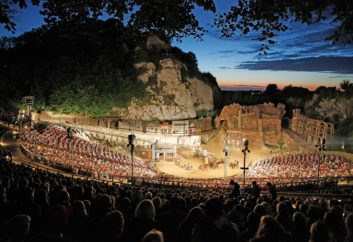 Part of this, Jackson says, is ensuring the physical characteristics of the loudspeaker cabinet are “as accurate as possible”, which will help in focusing energy to where it should be going. He also observes that the live music scene has changed considerably, to where multi-act bills are more the norm. “Conventional touring, where one band takes equipment around a whole load of stadiums, is something only the biggest artists can justify now,” he explains. “The touring industry in Europe has become based around festivals, so many artists are using other providers’ equipment rather than carrying their own sound.”
Part of this, Jackson says, is ensuring the physical characteristics of the loudspeaker cabinet are “as accurate as possible”, which will help in focusing energy to where it should be going. He also observes that the live music scene has changed considerably, to where multi-act bills are more the norm. “Conventional touring, where one band takes equipment around a whole load of stadiums, is something only the biggest artists can justify now,” he explains. “The touring industry in Europe has become based around festivals, so many artists are using other providers’ equipment rather than carrying their own sound.”
As Cédric Montrezor, executive director of application projects at loudspeaker developer L-Acoustics, observes, the requirements of big events were beginning to change prior to Covid. “When it comes to festivals and major tours, bigger is often the goal,” he says. “But leading into 2020, we were seeing more emphasis on ‘better’ experiences, rather than just bigger experiences.”
Montrezor explains that this is linked to the “growing acceptance” of immersive sound, which is used to give audiences a greater connection to the show. Pre-pandemic L-Acoustics had supplied its L-ISA 3D audio system for 6000 shows with a “natural, enveloping sound”. It was also used for corporate presentations, including BMW China’s launch of its new all-electric SUV, which called for engine noises to envelope the audience and track the vehicle’s movements in real-time.
“The key word post-Covid is flexibility,” Montrezor says. “Possibilities for live events change rapidly from region to region and week to week. Our industry has shown that they are up to the challenge and we are seeing creative solutions like the party pods at Australia’s Summer Sounds festivals, where Novatech Creative Event Technology took advantage of the pods to dissimulate Syva collinear arrays for delays.”
GROWING EVENTS
Martijn van Overveld, senior marketing manager for Europe, Middle East and Africa (EMEA) at Bosch (owner of the Electro-Voice and Dynacord brands), also acknowledges that the events market was growing pre-2020, which increased the demand for professional sound systems in both touring and installation. “There were many opportunities in the fixed install – sports venues, theatres, auditoria – and live markets, [with the latter covering] regional and international conferences, festivals and concerts,” he says. “For events that relied on installed house systems at venues such as stadia, a lot of upgrade projects were put on hold during the pandemic. With these venues open and budgets once again becoming available, we are starting to see these projects coming back on line.”
A feature of this kind of project, van Overveld adds, is the need for energy efficient systems, plus advanced integration of paging and even voice alarm (VA) into the main system. On the other side of live sound, he says it is important for rental companies to have their gear out on the road to make money. “This requires a system that is capable of delivering the power and quality with enough headroom, yet does not overshoot the needs of high investment. Which is where we see a trend towards versatile and powerful line array systems.”
The line array has, over the last 30 years, become the basis for most touring and big outdoor event or installed systems. Simon Purse at Martin Audio agrees that line arrays are “the dominant systems for large festival sites”, with optimisation technology developing to allow engineers to improve parameters such as the direct to reverberant ratio in difficult venues or reaching high SPLs at front-of-house, keeping off-site noise low.
Remi Vaucher of QSC agrees that line arrays are “still the go-to solution for most of the large-scale event applications”, especially when it comes to live concerts and festivals. “In the installation business, the situation is more diversified,” he continues. “According to the size of the venue [and its] location and the preference of the integrator/consultant, there could be some significant differences in the sound systems selected. Many consultants still like to work with large point source loudspeakers for the directivity control they provide at low frequencies. I don’t see this as a ‘come back’ for point source but more recognising a technical solution that is more adapted to some applications.”
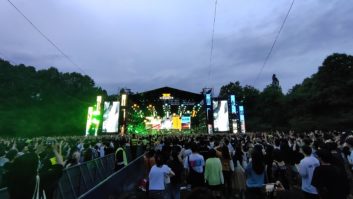 L-Acoustics is generally considered the pioneer of line arrays but Cédric Montrezor feels the choice of system technology should not be too rigidly influenced: “It’s really a question of choosing the right tool for the job at hand. We ensure that all of our products have the same sonic signature, from the most modest deployment to the biggest live events. We are already seeing large festivals with full capacity audiences coming back, like the recent Ubbi Dubbi Festival in Texas or the Download Pilot in the UK. Both used K Series line source arrays, which made sense as we were looking at audiences in the tens of thousands, requiring a very long throw. But when you want to create more of a sense of intimacy, or when your venue dimensions allow you to design a distributed system or an immersive configuration, point source or constant curvature is a great solution.”
L-Acoustics is generally considered the pioneer of line arrays but Cédric Montrezor feels the choice of system technology should not be too rigidly influenced: “It’s really a question of choosing the right tool for the job at hand. We ensure that all of our products have the same sonic signature, from the most modest deployment to the biggest live events. We are already seeing large festivals with full capacity audiences coming back, like the recent Ubbi Dubbi Festival in Texas or the Download Pilot in the UK. Both used K Series line source arrays, which made sense as we were looking at audiences in the tens of thousands, requiring a very long throw. But when you want to create more of a sense of intimacy, or when your venue dimensions allow you to design a distributed system or an immersive configuration, point source or constant curvature is a great solution.”
There has been a perception in live sound, particularly at the top end, that the line array has pushed point source out of the picture but this does not appear to be the case. “Point source never really went away, it’s always been there,” says Ed Jackson at HarmanPro. “We recently did an installation at the London Eye where we put three stages up for the whole summer and had to distribute the system in a way we wouldn’t have thought of before. We’re using a variety of speakers to fill in all the little gaps as much as we can and when you’re doing that, a big line array is not what you want.”
ALTERNATIVE OFFER
A company that continues to develop point source and offer it as an alternative to the line array is KV2 Audio. Technical support director Angus Davidson comments that the manufacturer has made considerable in-roads into the installation and theatre markets, particularly stage musicals and night clubs. He says KV2 is “in the process” of cracking the touring and big events market but that many big PA companies have already made a financial and reputational commitment to line arrays, giving that technology and its producers a strong hold on the live sector. “But it’s our task to keep pushing our product and we are doing that,” he says.
A feature of KV2’s VHD large format point source system is that most of its signal flow is analogue. Davidson says the element that is as important as the projection technology is the electronics, with KV2 not using conventional DSP in its designs. “The only digital we use is 20MHz (1-bit) PDM, which is a vastly different technology to PCM DSP, which is used in all commercial audio now,” he comments. Davidson acknowledges this stance has put KV2 out of step with others in the market, which have more readily embraced digital networking, but says the company’s new ESP amplifiers are digitally controlled, allowing them to be networked.
The reality is that the large-scale, networked audio world is now, as Martin van Overveld says, “in the digital domain”. A key part of this is audio over IP (AoIP), with Audinate’s Dante protocol in particular providing the network infrastructure. “Dante is the dominant audio networking choice,” says van Overveld. “It is also the standard for Bosch because it is part of our OMNEO IP architecture.”
Remi Vaucher at QSC says some high-end touring and events companies “are fond of the RAVENNA technology” (the AoIP system developed by Lawo affiliate ALC NetworX but that the market is “massively dominated” by Dante. “Networking requirements are slightly different between live sound applications and fixed installations,” he says. “For live sound, robustness, ease of deployment, low latency and high sampling rates are among the main requirements. For fixed installations, additional considerations are ease of maintenance, adoption by IT staff, high sampling rates and super-low latency.”
Nick Screen, director of business development for sports and transportation at Harman International, comments that AoIP is now the standard for large installations “and has been for some time”, with Dante the most popular format. “Aside from Dante’s audio credentials, there have been two other major factors in its success: interoperability between manufacturers and the fact it uses COTS (commercial off-the-shelf) hardware and standard network traffic,” he says.
INSTALL UNBIQUITY
At Martin Audio, Simon Purse confirms the ubiquity of Dante, particularly in the installation market with a growing presence in touring. “A redundant network is always preferred for mission critical events,” he adds, “and often a fall-over is also employed in the unlikely event the redundant network fails. Latency can be a concern but often a complete digital network can reduce AD to DA conversions and lessen the impact of processing time.”
The technology is there to make large-scale events happen and will only continue to develop. It is to be hoped that, as the world changes again, its core market will come back again, along with the people it needs to run everything.
Click here to read more from our live events special edition.
